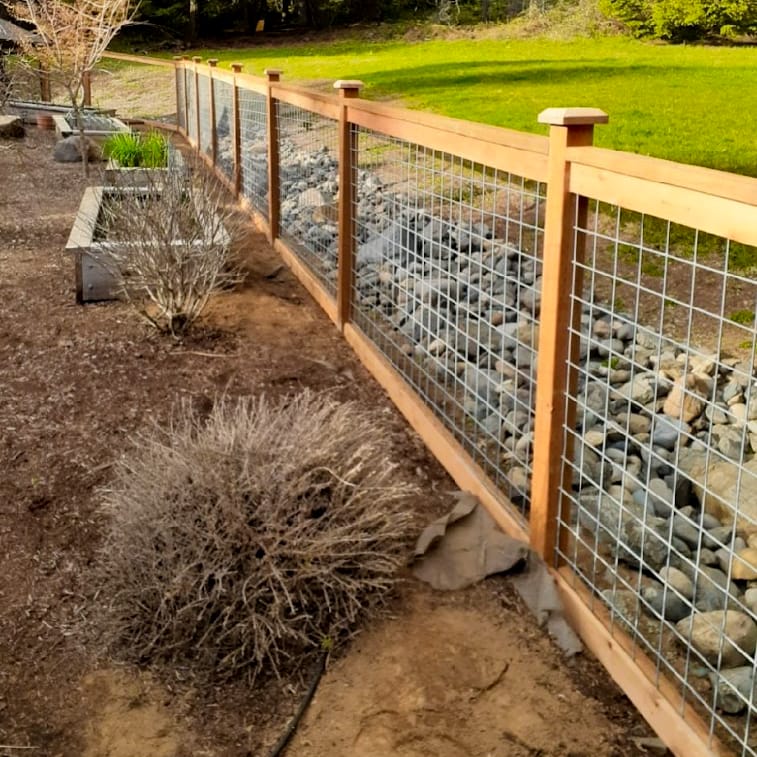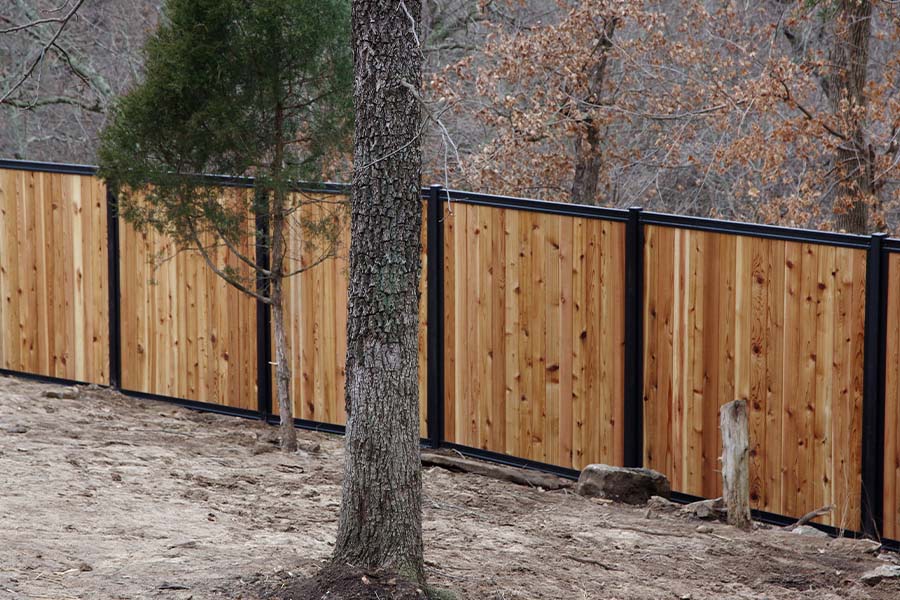All Categories
Featured
Your fence is exposed to various weather problems year-round, and while it serves as an important part of your building, it's additionally one of the most at risk elements when it comes to weather-related damage. Here are some efficient strategies to safeguard your fence from weather-related damage.
Wooden Fencings: While wood is a traditional option for secure fencing, it is prone to bug, rot, and bending damages, specifically in locations with high dampness. Pressure-treated wood or cedar is a lot more resilient, yet regular upkeep is essential to maintain it in great condition. Vinyl Secure fencing: Plastic is an outstanding alternative for those trying to find a low-maintenance and weather-resistant fence. It's unsusceptible moisture, won't warp or fracture in the warmth, and stands up to fading from UV rays. Metal Fencing: Wrought iron and aluminum are resilient materials for fencing, however they require a rust-resistant finishing to safeguard them from corrosion as a result of wetness. A protective finish or normal maintenance can stop corrosion and extend the life of steel fences. Compound Fencing: Made from a blend of wood fibers and plastic, composite fencings are extremely resistant to weather elements, consisting of warm, wetness, and uv rays. This product supplies an equilibrium of longevity and aesthetic allure. Selecting a product matched to your environment will offer far better protection for your surround the long term.
Seal or Stain the Wood: Using a high-grade sealer or discolor to your timber fence creates a water-proof obstacle that stops wetness from entering the timber. It likewise aids shield the timber from UV rays, which can create staining and drying. Reapply Sealant Frequently: With time, the safety obstacle of your sealer or stain can use down. Depending upon your environment, it's a great concept to reapply each to 2 years to keep the timber safeguarded. This treatment will maintain the fence's look, avoid rot, and prolong its life expectancy.
![]()
For extra defense, think about making use of wind-resistant mesh displays or panels in areas where wind is a considerable worry. This added layer can help reduce the pressure that the wind applies on your fencing.
Examine Drain: Ensure that the ground around your fencing inclines away from the posts. Correct water drainage allows water to stream away from the fencing, preventing moisture build-up. Mount Drain Systems: In locations where water drainage is a concern, consider including a French drain or crushed rock around the base of your fence messages to reroute water away from the structure. Excellent drainage can stop rot, corrosion, and various other types of weather-related deterioration.
![]()
![]()
Concrete Footings: Establish fencing blog posts in concrete to stop them from loosening in time because of dirt disintegration or changing ground. Steel Dental Braces: Including metal braces to fence posts can supply extra stamina and reduce the risk of damaging or leaning. Strengthening your articles makes sure that your fence will remain in location, also throughout extreme weather.
For wood fences, carefully clean the surface area with a moderate cleaning agent to eliminate dust and crud. For plastic fencings, use a soft fabric and cleaning solution to stop buildup. For steel fencings, evaluate for corrosion and sand it off prior to applying a fresh layer of paint. Verdict. Your fencing is an important attribute of your home, and with the best care, it can withstand the obstacles presented by the weather. By selecting resilient products, executing routine maintenance, and enhancing weak points, you can safeguard your fencing from the aspects and prolong its life. Regular examinations, applying protective layers, and taking steps to regulate moisture and wind exposure will certainly aid make sure that your fencing stays solid, useful, and appealing for several years ahead.
- Select Weather-Resistant Materials. The products you select for your fencing can have a major influence on its capability to hold up against the components. Different products are much better outfitted to manage particular weather condition conditions. Here's a breakdown of just how various materials stand up versus the weather condition:
Wooden Fencings: While wood is a traditional option for secure fencing, it is prone to bug, rot, and bending damages, specifically in locations with high dampness. Pressure-treated wood or cedar is a lot more resilient, yet regular upkeep is essential to maintain it in great condition. Vinyl Secure fencing: Plastic is an outstanding alternative for those trying to find a low-maintenance and weather-resistant fence. It's unsusceptible moisture, won't warp or fracture in the warmth, and stands up to fading from UV rays. Metal Fencing: Wrought iron and aluminum are resilient materials for fencing, however they require a rust-resistant finishing to safeguard them from corrosion as a result of wetness. A protective finish or normal maintenance can stop corrosion and extend the life of steel fences. Compound Fencing: Made from a blend of wood fibers and plastic, composite fencings are extremely resistant to weather elements, consisting of warm, wetness, and uv rays. This product supplies an equilibrium of longevity and aesthetic allure. Selecting a product matched to your environment will offer far better protection for your surround the long term.
- Regularly Deal With Wood Fences. Shielding it from wetness, temperature level, and sunlight fluctuations is vital if you have a wood fence. Timber can absorb dampness from snow, rainfall, or humidity, triggering it to rot and weaken. Below's how you can safeguard wooden fencings:
Seal or Stain the Wood: Using a high-grade sealer or discolor to your timber fence creates a water-proof obstacle that stops wetness from entering the timber. It likewise aids shield the timber from UV rays, which can create staining and drying. Reapply Sealant Frequently: With time, the safety obstacle of your sealer or stain can use down. Depending upon your environment, it's a great concept to reapply each to 2 years to keep the timber safeguarded. This treatment will maintain the fence's look, avoid rot, and prolong its life expectancy.

- Set up Windbreaks. Strong winds can cause significant damages to fencings, specifically those constructed from tall frameworks or lightweight products. Wind can topple a fencing or trigger panels to move. Setting up a windbreak is a reliable way to lower the effect of gusty winds. You can develop a windbreak by growing bushes, trees, or high plants near your fence. These all-natural obstacles can aid disperse wind, preventing straight gusts from damaging your fencing.
For extra defense, think about making use of wind-resistant mesh displays or panels in areas where wind is a considerable worry. This added layer can help reduce the pressure that the wind applies on your fencing.
- Guarantee Correct Drain Around Your Fencing. Standing water is just one of the leading causes of fencing damage, specifically for wood fencings. Water can deteriorate the fencing blog posts, creating them to rot and wear away faster. To avoid this:
Examine Drain: Ensure that the ground around your fencing inclines away from the posts. Correct water drainage allows water to stream away from the fencing, preventing moisture build-up. Mount Drain Systems: In locations where water drainage is a concern, consider including a French drain or crushed rock around the base of your fence messages to reroute water away from the structure. Excellent drainage can stop rot, corrosion, and various other types of weather-related deterioration.

- Trim Overhanging Branches and Vines. Trees and plants near your fence may feel like an ornamental addition, but they can present risks when left uncontrolled. Looming tree branches and vines can trigger damage to your fencing during tornados or high winds. Furthermore, vines can catch wetness against wooden fencings, quickening the decaying process. To secure your fence, trim any kind of branches or plants that hang over or near the fencing routinely. This will minimize the possibility of falling particles and protect against dampness accumulation.
- Enhance Fence Posts. Fencing posts are susceptible to changing, leaning, and rotting, especially during periods of extreme weather. If your fence is in an area that experiences high winds or freezes throughout winter, it's important to reinforce the posts to preserve stability.

Concrete Footings: Establish fencing blog posts in concrete to stop them from loosening in time because of dirt disintegration or changing ground. Steel Dental Braces: Including metal braces to fence posts can supply extra stamina and reduce the risk of damaging or leaning. Strengthening your articles makes sure that your fence will remain in location, also throughout extreme weather.
- Normal Examinations and Upkeep. Check your fencing after tornados or hefty rain to look for problems such as loose boards, drooping posts, or rusted areas. Furthermore, cleaning your fence occasionally helps keep its problem.
For wood fences, carefully clean the surface area with a moderate cleaning agent to eliminate dust and crud. For plastic fencings, use a soft fabric and cleaning solution to stop buildup. For steel fencings, evaluate for corrosion and sand it off prior to applying a fresh layer of paint. Verdict. Your fencing is an important attribute of your home, and with the best care, it can withstand the obstacles presented by the weather. By selecting resilient products, executing routine maintenance, and enhancing weak points, you can safeguard your fencing from the aspects and prolong its life. Regular examinations, applying protective layers, and taking steps to regulate moisture and wind exposure will certainly aid make sure that your fencing stays solid, useful, and appealing for several years ahead.
Latest Posts
Find Out Reduce Expenses on Car Maintenance with Montclare Auto Repair’s Special Deals
Published May 23, 25
1 min read
Explore WyHy Federal Credit Union Maximizes Your Savings on Loans and Savings
Published May 22, 25
1 min read
Explore Limited-Time Auto Repair Specials in Chicago at Montclare Auto Repair
Published May 21, 25
1 min read
More
Latest Posts
Find Out Reduce Expenses on Car Maintenance with Montclare Auto Repair’s Special Deals
Published May 23, 25
1 min read
Explore WyHy Federal Credit Union Maximizes Your Savings on Loans and Savings
Published May 22, 25
1 min read
Explore Limited-Time Auto Repair Specials in Chicago at Montclare Auto Repair
Published May 21, 25
1 min read